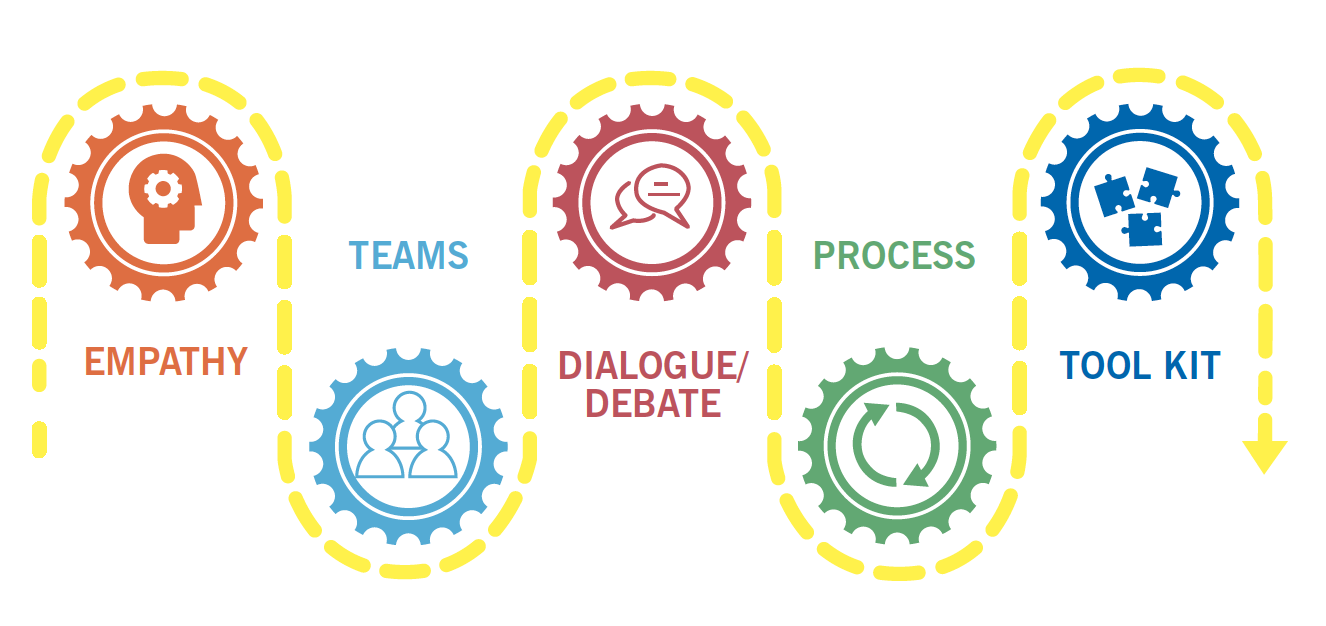
Five Core Elements of Design Thinking
Understanding User Needs and Context through Empathy
This emphasis on decision makers experiencing a profound and personal, almost sensory, immersion into the subjective realities of individual stakeholders may be the key differentiator between design thinking and other approaches like The Lean Startup.
Formation of Diverse Teams
Significant academic research demonstrates the positives associated with bringing varied perspectives into the conversation with difference providing the raw material for more creative solutions. Diverse teams produce impact by combining these with dialogue-based conversations to build alignment across varied stakeholders, so often a challenge in government innovation efforts. Second, diversity expands team repertoires, paving the way for higher-order solutions, rather than sub-optimal negotiated compromises. Third, a diverse, and active, team has greater access to networks and resources while enhancing members’ incentives to co-create.
Dialogue versus Debate
Successful design-oriented conversations are most vividly illustrated perhaps by what they are not. They don’t accept obvious and conventional problem definitions, allow extensive debates, or concentrate primarily on evaluating options visible from the start. Instead, they first explore the problem definition itself as a hypothesis, seek to understand rather than to argue with others’ differing perspectives in an inquiry-focused conversation, and look for solutions to emerge during the process. This approach supports innovation processes by encouraging a focus on surfacing tacit assumptions, fostering team alignment and learning, allowing for emergent solutions, and building engagement and trust.
Iterative and Experimental Process
Creating and testing multiple solutions through quick, field-based experiments is another hallmark of design thinking. This fosters learning in action and minimizing investment risk. Experimental approaches impact innovation outcomes by minimizing both the investment in and the visibility of failures, especially important in bureaucratic, riskaverse
environments, and mitigate well-recognized decision biases that interfere with effective problem solving.
Structured Process and Tool Kit
Design thinking involves the presence of a structured, facilitated process with stages and steps, and a specific tool kit. The idea of tightly structuring creative processes might seem counter-intuitive to artists but, in our research, we find that rather than stifling organizational employees’ creativity, the correct structure frees it. Successful innovation leaders use design’s structured processes to engage employees and provide them a safe environment for testing new approaches. Activities like face-to-face ethnographic research with customers, deep immersion in their perspectives, co-creation with stakeholders, and the design and execution of experiments are integral to design thinking.
This report details four case studies that illustrate design thinking in action, outlining different facets of design thinking as employed by social sector organizations. In these cases, we highlight the issues that design thinking addresses, offer specifics of the processes implemented, and outline observed benefits and lessons learned.




